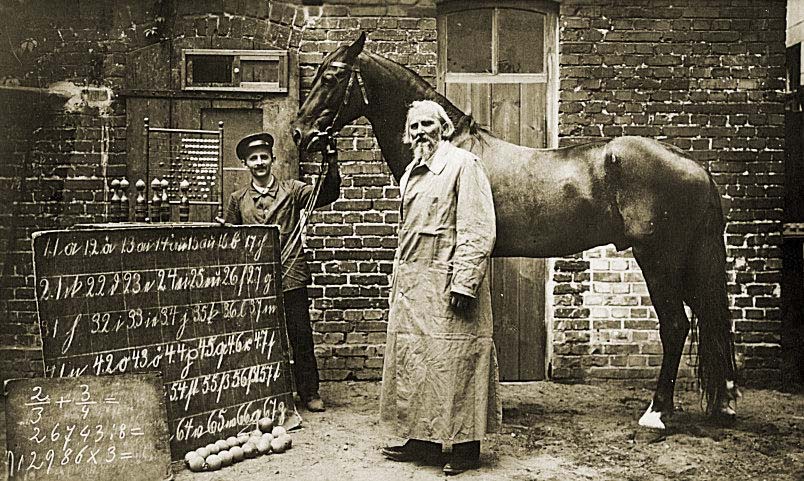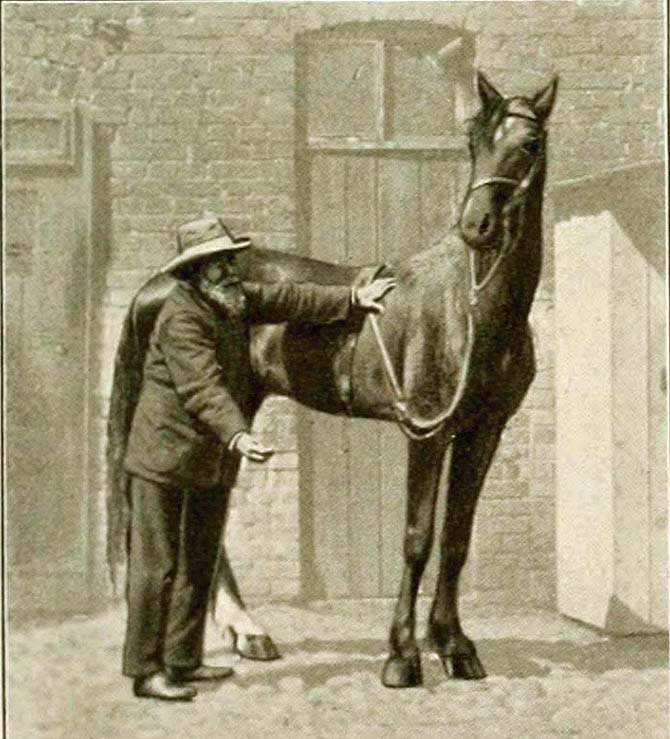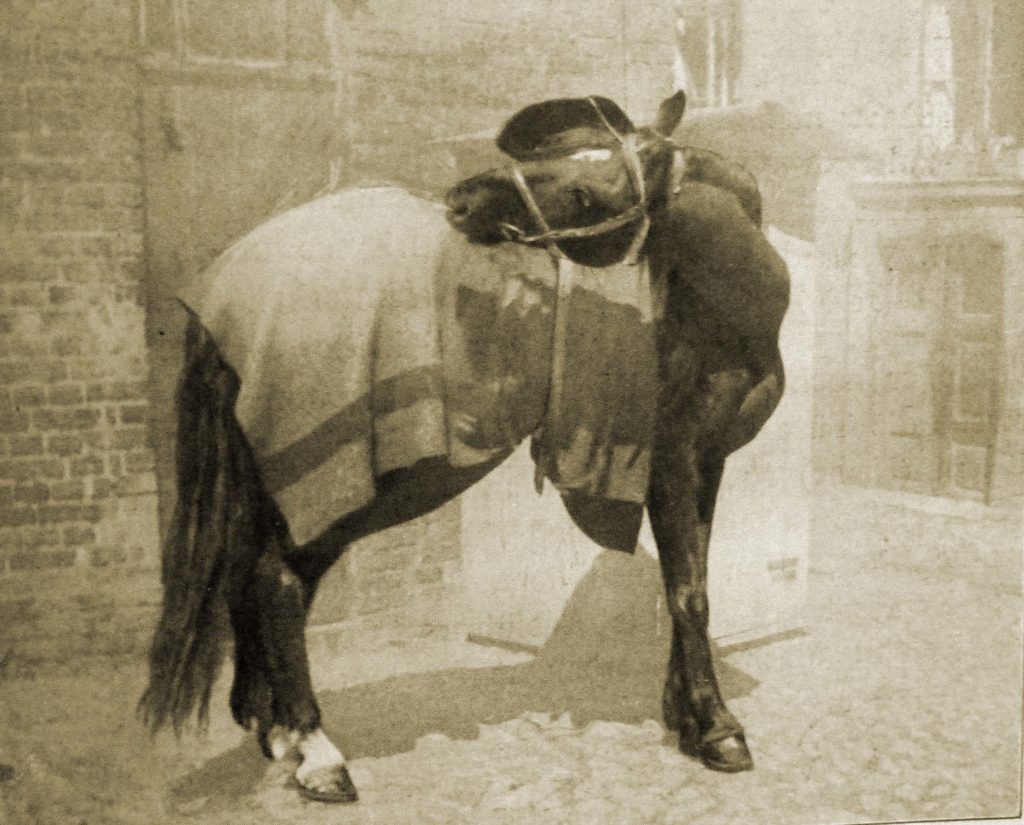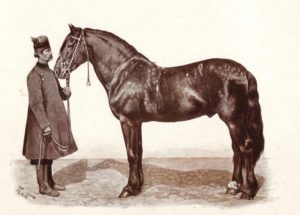
Whenever I see horses performing the most incredible things at horse shows, I think about how to teach them such things and where their limits are. So far, I have not tried to teach my horses more than the necessary aids for uncomplicated, accident-free handling in order to be able to enjoy, among other things, the joint rides without any problems.
Nevertheless, I have always been interested in the psyche and behavior of horses. I was particularly fascinated by the interaction between the so-called horse whisperers and their horses.
The other day, I came across an interesting article that surpassed anything I had seen or read about it before. I was so excited by the story that I literally soaked up all the other information I could find on the case.
And I am not the only one who could hardly believe the story: In the summer of 1904, the horse called Clever Hans and its owner Wilhelm von Osten were the main topic of conversation in all of Berlin.
Even though, unlike usual, in this story an Icelandic horse doesn’t play the central role, I think our HestaSaga readers will love this story nevertheless.
The horse Hans and the ideas of Mr. Osten
Wilhelm von Osten was very interested in the thinking ability of horses – which was probably based on an observation he had made with the horse he bought in 1888, named Hans.
Mr. Osten lived in northern Berlin at Griebenowstraße 10 near the Prenzlauer Berg district. In the backyard of the five-story house he kept his horse. At that time, it was not uncommon to keep horses in the city, although it was rather rare for private citizens to keep their horse right by the house.
One day, as Mr. Osten was returning home from a ride in his carriage, he noticed that his horse, Hans, was making a wide turn without being asked so that the carriage could pass through the narrow driveway without any problems. Osten was sure that this behavior showed that horses were capable of independent thought. He began to get excited about the idea from then on and looked for ways to support his thesis.
The “lessons” of Mr. Osten
In 1890, for example, he began to teach his horse Hans various terms. To do this, he used methods that are usually used with toddlers to teach them to speak.
First, he tried to teach Hans the distinction between right and left. To do this, he lured the horse’s head in one direction with a piece of carrot, bread or sugar and at the same time repeated the sentence:

There are no photos of Hans available but this illustration shows Clever Hans in training with Mr. Osten.
“Hans, that’s on the right!” or “Hans that’s on the left” when it went left.
They continued with “up”, “down”, “forward” and “stop”.
Soon, Mr. Osten was also able to use all the terms he taught Hans in motion using only his voice.
“Hans, turn left!”
It was said that one day Mr. Osten was traveling with a high-ranking officer in his carriage and said to him:
“Major Keller, now I want to show you once what my Hans can do!”. He is then said to have fastened the reins to the carriage and commanded the horse:
“Hans go right! Hans, turn left into the street! Trot! Make a stop!”
The horse allegedly understood and correctly implemented all commands.
His next goal was to teach the horse to count. Hans learned the numbers up to five, but his sudden death put the lesson plans on hold for a while: Hans died suddenly due to an intestinal blockage. He lived to be twelve years old, five of them owned by Mr. Osten.
But Mr. Osten did not give up and continued to dream of being able to prove to the world that horses can actually think.

Clever Hans shows this by bending his neck to the right, that is, to the right side.
Text and image source:
- Karl Krall, Denkende Tiere, Leipzig 1912

